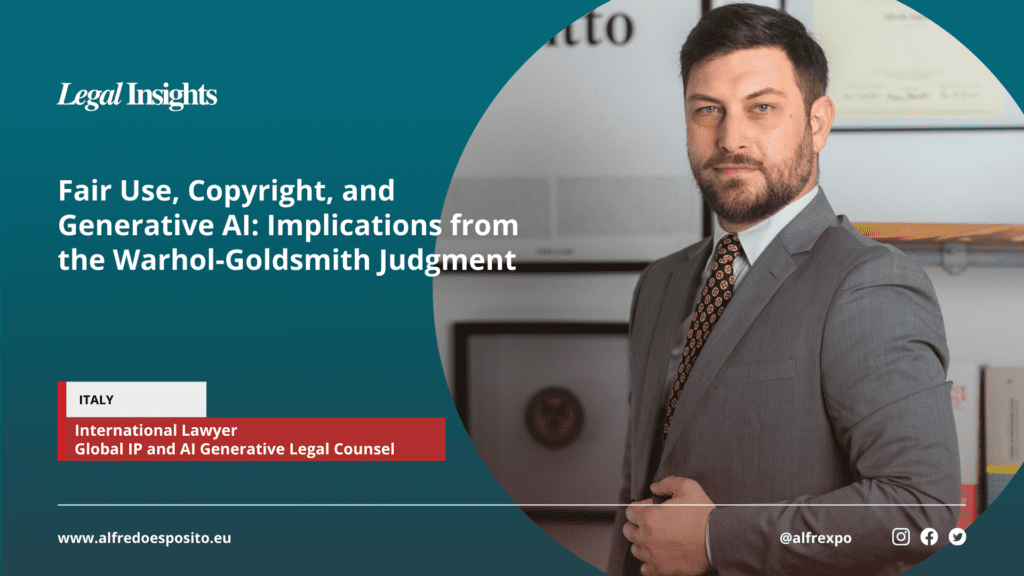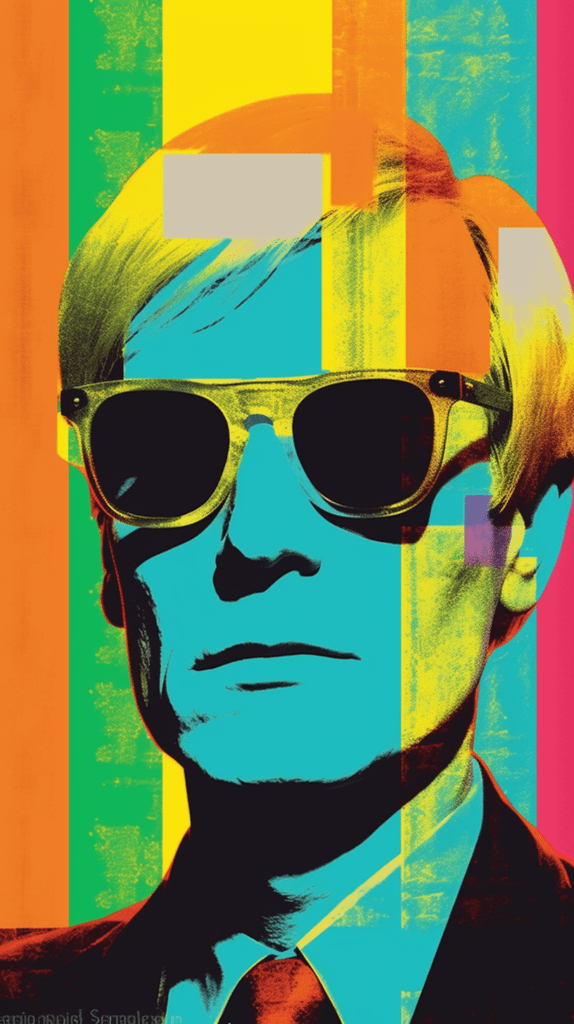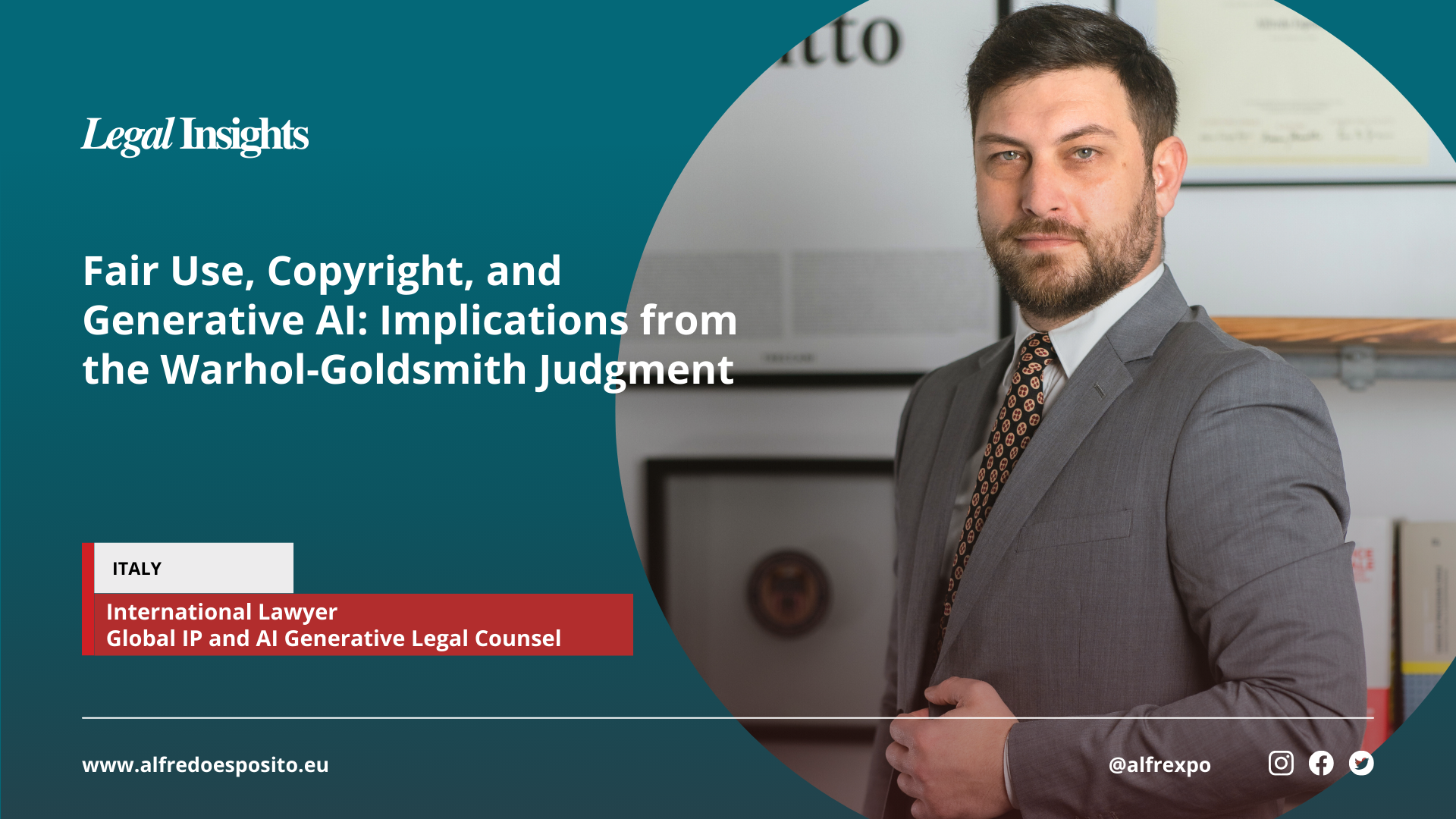
The Supreme Court of the United States recently issued a decisionon photography, derivative graphics, and fair use, which may also set the standard for artificial intelligence and graphics generation software.
Specifically, at issue were portraits of the musician Prince made by Andy Warhol. The Court ruled that such portraits do not fall into the category of fair use under U.S. copyright law.
The decision, by a vote of 7-2, pointed out in detail that Warhol’s works based on Lynn Goldsmith’s original photograph should not be subject to the fair use discipline and such works therefore constitute copyright infringement.
The historical event
Goldsmith was commissioned by Newsweek in 1981 to photograph an up-and-coming musician named Prince Rogers Nelson, and Newsweek published one of Goldsmith’s photos along with an article about Prince.
In the case of Andy Warhol, it should be noted that the work based on Prince’s photograph was commissioned by Vanity Fair magazine, a subject for an article in the magazine itself, with a very specific and delimited license required of Goldsmith.
The terms of the license, costing $400, stipulated that the original photo was to serve as a “one-off” and only as an “artistic reference for an illustration,” which in fact resulted in the purple screen-printed portrait of Prince published in the November 1984 Vanity Fair article.
From the original photo, Andy Warhol thus created his famous work on Prince, without the knowledge of the photographer Goldsmith
Two legal fronts opened at this point with AWF filing a lawsuit seeking a declaratory judgment of non-infringement of copyright or, alternatively, fair use. Goldsmith instead filed a counterclaim for copyright infringement.
Goldsmith’s defense has consistently argued that these portraits constitute unauthorized derivative works of her original photograph and therefore violate her copyright.
The Court of Appeals, overturning the decision of the lower court, agreed with Goldsmith, with the matter then reaching the Supreme Court for a final decision on fair use.
What is “Fair Use”?
Fair use is a U.S. legal doctrine that promotes freedom of expression and allows the use of copyrighted works, even without the permission of the rightful owner, under certain circumstances.under certain circumstances without the permission of the copyright owner.
It is codified in Section 107 of the U.S. Copyright Act and provides that fair use of a copyrighted work for purposes such as criticism, commentary, news reporting, teaching, study, or research does not constitute copyright infringement.
Fair use in Italy
In Italy there is no fair use discipline, although the Italian copyright law (Law No. 633/1941) establishes several limitations and exceptions to copyright that are very similar in practice, in the wake of the European Copyright Directive (Directive 790/2019/EU), to the U.S. discipline.
For example, the use of protected works for the purposes of study, scientific research, criticism, review, caricature, parody, quotation, and information is permitted under Article 70 of the Copyright Actwhich broadly traces the U.S. discipline.

However, it is important to note that the permissible use of copyrighted works must be carried out in accordance with the principles of fairness and with due regard for the legitimate interests of the rights holders, and must not impair the normal exploitation of the work.
Broadly speaking, we could say that in order to ascertain whether the use of a work falls under the right of “fair use” or not we will have to rely, with reference to the use, on the nature of the protected work, as well as on the way it is used, in the case also with an ex-post evaluation to ascertain the effects on the market.
Why Andy Warhol’s work does not fall under Fair Use
The “fair use” doctrine provides a set of criteria that must be considered in determining whether or not the use of a copyrighted work constitutes infringement.
The four benchmarks, for the purpose of determining fair use, are as follows:
The intent and character of the use. This criterion assesses the intent and nature of the use of the work in question. Thus, it considers whether the use is commercial in nature, such as for profit, or whether it is for research, teaching, criticism, or parody. In addition, consideration is given to whether the use brings a transformation to the original work, creating a new meaning or message, or whether it merely reproduces or copies the work without making significant changes.
The nature of the copyrighted work. This criterion assesses the type of work subject to copyright protection. Some works, such as informational or already published works, are more likely to be considered subject to fair use than other works, such as creative or unpublished works;
The amount and substantiality of the portion used in relation to the work as a whole. This point concerns the amount of copyrighted material that is used without the permission of the rights holder. There is no predetermined quantitative rule, but generally it is assessed whether the use involves a significant portion of the work as a whole or whether it is limited to a small and nonessential portion..;
The effect of use on the potential market or value of the copyrighted work. This criterion examines whether the unauthorized use of the work has a negative impact on the potential market or value of the original work. It assesses whether the use would compete with the original work in the market or cause financial harm to the rights holder. If the use reduces the commercial value of the work or prevents its exploitation opportunity, it is less likely to be considered fair use.
The Supreme Court, examining examined the first factor of fair use, namely the “purpose and character” of the use of the works, found that both images, both Goldsmith’s and Warhol’s, were portraits of Prince used in commercial contexts. For this reason, the Court ruled that the purpose of Warhol’s image was essentially the same as Goldsmith’s original photograph, and no transformative use could be considered authorized in the absence of an express license.
The Supreme Court rejected the Andy Warhol Foundation’s argument that Warhol’s portraits portrayed Prince as an iconic figure, conveying a different meaning to the public than Goldsmith’s realistic photo. This ruling, which came at the end of three degrees of judgment oscillating between opposing interpretations, emphasizes the importance of a careful assessment of the elements that influence fair use, such as the purpose and character of the work’s use, as well as its commercial nature.
It also reaffirms the fundamental concept that fair use does not represent absolute protection and that obtaining a license in advance can be critically important, especially when it comes to commercial uses related to creative works.
The implications of this decision will undoubtedly have a major impact in the fields of art, entertainment and journalism, as well as in the specific field of artificial intelligence applied to photography and graphics, considering derivative generation as one of its central elements.
The ruling on fair use and images generated by artificial intelligence systems
In line with the Supreme Court’s ruling on the Warhol vs. Goldsmith case, platforms such as Midjourney and Stable Diffusion thus require special attention to Generative Ai and copyright implications.
Midjourney, for example, significantly manipulates uploaded images, making the generated image somewhat distinct from the original. This could lead to the resulting image being evaluated as “transformative” and, in some cases, could escape copyright infringement, at least under the aspect raised by the Supreme Court.
In contrast, software such as Stable Diffusion appears to maintain a closer resemblance to the original image, making the perception of direct inspiration more immediate. In this situation, if the generated image is used for commercial or promotional purposes without the permission of the copyright holder, it could constitute a violation of fair use.
In light also of the emergence of new manipulative and extreme retouching software such as DragGAN, one can better understand the interest that a decision such as the Supreme Court’s may have in today’s landscape and glimpse the challenge that we as jurists and technology practitioners are facing, trying to dissect the complexities of these legal issues and helping to shape a future in which art, technology and law will succeed in harmonious coexistence.
Avv. Alfredo Esposito
Featured on Agenda Digitale



